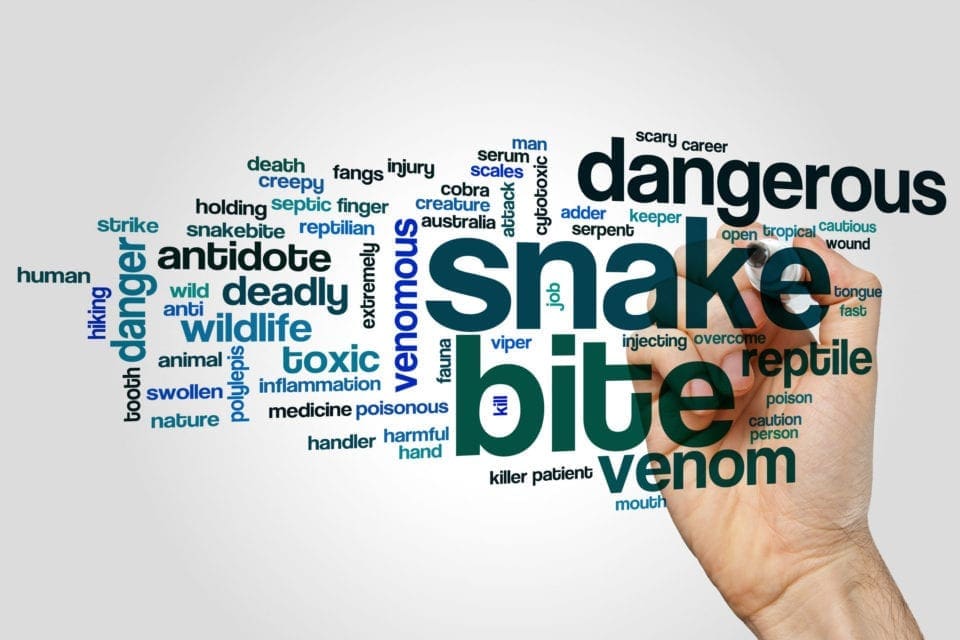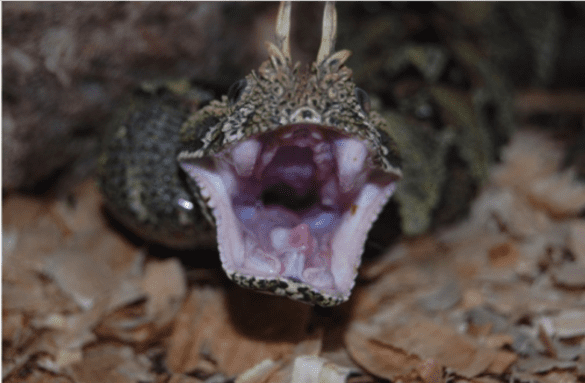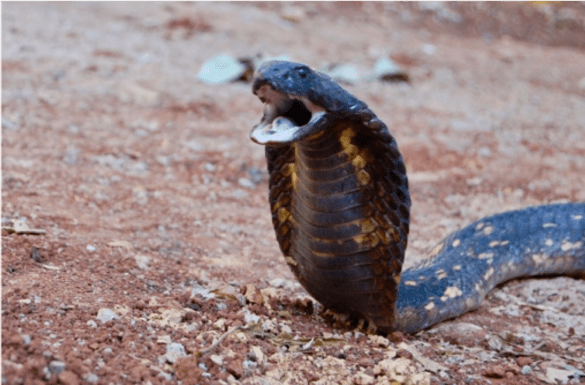Dealing with snakebites effectively cannot just be about limiting the impact on working hours but must also be about saving lives. The safety threat presented by snakes is very real as is the impact on workforce morale and efficiency.
Alongside a robust safety system and education that helps workers avoid snakebites, a strategy to efficiently and effectively deal with a snakebite is also needed. Even in offshore environments, sea snakes are a threat. Whatever the location, if dangerous snakes are present, a definitive treatment program will help save lives, prevent permanent disability and give workers peace of mind to get on with their jobs in an efficient manner.
Ultimately, as with a heart attack or a stroke, “time is tissue” with a snakebite and earlier antivenom administration is strongly associated with reduced mortality, morbidity, and lost time. The first minutes and hours after envenomation are critical to saving the life and limb of the patient. Whether neurotoxic, cytotoxic, or hemotoxic, fast response is critical. In all cases, the solution is the right dose of the right antivenom.
With at least 600,000 people worldwide killed or permanently disabled each year, snakebites are the biggest public health crisis that no one has heard of. For projects in Africa, Asia and Latin America, the Oil & Gas industry needs to consider the risks of workers being bitten and its corporate social responsibility to support local communities with this silent killer. Remote Medical International, working alongside the Asclepius Snakebite Foundation, have developed proven management and response strategies specific to the threat of snakebites.
When patients are treated quickly with the appropriate antivenoms and supportive care, the progression of an envenomation can often be arrested before serious injury has occurred. The problem in remote locations is that, even if the right antivenom is available, medical personnel often lack the training to administer it.
Oil companies, should be asking if the risk of snakebites at the project stage is a concern and, if so, what should be done? Although Medevacs may appear to be a good option, there are many downsides to this approach. First, a Medevac is costly and places stress on the evacuating patient. Second, and more critically, time really is of the essence when it comes to treating a snakebite. Delaying treatment means increased damage to surrounding tissue, resulting in greater risk of permanent disability or even a fatal outcome. The progression of necrosis can be prevented or stopped by antivenom administration, but once the damage has been done, it cannot be reversed. Another question when considering the Medevac option is that, once evacuated, does the medical centre the patient is transferred to have the correct antivenom and expertise to deal with the envenomation? There is still the need for a complete care strategy.
Although Medevac may still ultimately be required, the ability to assess and treat the wound locally offers numerous benefits. First, the bite can be treated more quickly without a delay in the time to transfer the patient. This is proven to produce much better patient outcomes. The knowledge that this service is at hand also presents the workforce with greater peace of mind and can improve morale. In addition, the oil company is also opening an opportunity to provide supplementary support to remote, local communities where, previously, the chances of a good outcome following envenomation were low. This enhances CSR (corporate social responsibility) and generates good will in the local community.
In Kenya, snakebite envenoming claims thousands of lives every year and, like diseases such as malaria, is a part of everyday life. For the oil industry, the threat of snakebites in this area is probably one of the top three risks to workers.
To support its local strategy in dealing with snakebites, International Oil Company, Tullow Oil, has worked alongside Remote Medical International with the support of the Asclepius Snakebite Foundation to put a robust response strategy in place for its sites in Kenya. This includes donations of medicines, and training of staff in local hospitals to systematically assess, diagnose, and treat patients with snake envenomation. The definitive treatment capability that has been developed produces better patient outcomes for anyone who is bitten in the area, and reports are already indicating a reduction in snakebite deaths and disabilities and an increase in patients seeking treatment in the area since the program began.
The response strategy from Remote Medical International includes evaluation of the local threat, identification of species of concern, assessment of the relative risk to workers, and a clear risk reduction strategy. The clinical implementation comprises assessment of which antivenom is most effective against the local venomous snakes of medical significance and the creation of advanced field treatment protocols, along with continual advisement and 24/7 consultation with medical and SME (subject matter experts) in the event of envenomation.
Andy Kimmell, Operations Director, Global Coordination & Security at Remote Medical International said: “A medical response team for an envenomation needs to be trained specifically for such an event but the overall management of snakes in the area requires cooperation through a multidisciplinary team. We work with experts in snakebites and antivenom and a senior SME is always available to oversee incidents. It is through a well thought out, robust and cohesive strategy, put together by experts in this area, that we are able to save lives and limbs.”
Prevention of snakebites is the first goal. The team works proactively with snake handlers, safety and security teams to try to remove the threat of snakebites from camps and work areas. Inevitably, however, this cannot be 100 percent assured and snakebites do occur. When this happens the circumstances are reviewed, and safeguarding procedures updated if appropriate.
Safe and Sound Asleep?
“At a remote oil and gas camp in Kenya, a man sleeping in an eight-man dormitory awoke with breathing difficulties and a pain in his hand. The on-site medics quickly identified it as a cobra envenomation and acted,” recalled Kimmell.
He added, “Of course, a top priority was to administer the correct antivenom and treat the patient. The neurotoxic bite was attacking the respiratory system and quick action was needed to save the man’s life. The other priority was to get the other seven men out of the tent and to safety until the snake had been found. Snake handlers and security teams worked quickly to find the snake, humanely capture it and release
it in accordance with procedures outside of
the camp.
The other underlying issue for this attack, however, was that the snake entered a place that workers considered a place of rest and safety. The onsite snakebite team, including handlers, security and medical staff, worked to restore confidence among the workers and carry out due diligence to ensure there was not a bigger, unseen issue on site such as nest of cobra eggs nearby that had gone unnoticed.”
Jordan Benjamin, Founder & Executive Director of The Asclepius Snakebite Foundation said: “This example shows the complexity of dealing with snakebites in an austere environment. Every snakebite is a unique toxicological emergency that must be dealt with quickly and precisely in order to ensure the best possible outcome for the patient. Every minute wasted after a bite occurs allows more time for the various venom components to attack their targets in the victim’s body, and there is a marked increase in mortality for every hour that passes until the right dose of the right antivenom is administered.
Companies that rely on Medevacs as their primary response to a snakebite fail to realize that they are making the situation worse. It is far more effective, both in cost and in outcomes, to invest in a robust snakebite management plan with onsite antivenom treatment capabilities. Snakebite is an occupational hazard, and the psychological effect on others in the work area can also be significant. Robust systems need to be in place to both react to the immediate threat to life from the envenomation and deal with how and why the bite occurred, taking any actions necessary to reduce risk in the future.”
A little About Antivenoms…
Developments in antivenoms have helped to reduce mortality rates from snakebites in remote areas. Treatments were previously based on using antibodies from horse serum and required constant refrigeration. This posed several problems: Antibodies from horse serum are known to produce high rates of anaphylaxis and can provoke life-threatening anaphylactic reactions to the antivenom. Its administration required at least two advanced medics on site to deal with any reaction. Since 95 percent of bites occur in rural areas of the developing world, the need for refrigeration also severely limited where the antivenom could be stored, often leading to a delay in getting the antivenom to the patient.
Modern antivenoms are much more stable and use highly purified antibody fragments that have undergone additional processing to remove the immunogenic component of the molecule responsible for severe allergic reactions. This means they can be transported without cold chain refrigeration, stored on a shelf at ambient tropical temperatures for years, and administered safely by direct intravenous push, helping reduce the time to treatment in remote locations.
“The advances made in antivenoms have helped enormously with the threat to life of snakebites in remote areas. Freeze dried serums that do not require refrigeration and have longer shelf life make treatment more accessible and more affordable, as well as providing improved safety with lower risks of an allergic reaction. With these antivenoms available, more work now needs to be done in terms of outreach and education to help remote communities deal with this threat.” added Benjamin.
Summary
Snakebites claim hundreds of thousands of lives and limbs every year worldwide. A robust strategy to deal with an envenomation is needed to reduce mortality rates and the chances of permanent disability in the oil industry. By working with subject matter experts and producing a complete plan to reduce the risk of snake encounters and procedures to swiftly and effectively treat snakebites at the point of injury when they occur, Remote Medical International has helped the oil industry better handle this threat. Medevacs, although sometimes necessary, should not be the primary approach to care of snakebites. Through education and outreach, the industry can also deliver vital support to local communities and workers to help make lives safer and better in regions where they are operating.
Photos courtesy of Remote Medical International
Oil and gas operations are commonly found in remote locations far from company headquarters. Now, it's possible to monitor pump operations, collate and analyze seismic data, and track employees around the world from almost anywhere. Whether employees are in the office or in the field, the internet and related applications enable a greater multidirectional flow of information – and control – than ever before.






